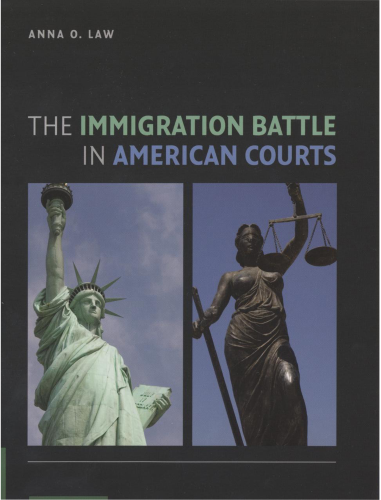Jul 21, 2010
New Book By DePaul Professor Underscores The Federal Appellate Courts’ Critical Role In Crafting Immigration Policy
New Book By DePaul Professor Underscores The Federal Appellate Courts’ Critical Role In Crafting Immigration Policy
Amid a torrent of immigration cases, the second-highest courts in the land—the U.S. Courts of Appeals—have become primary policy-making bodies on that issue, according to analysis by Anna O. Law, an associate professor of political science at DePaul University, in her new book “The Immigration Battle in American Courts.”
Because the U.S. Supreme Court selects only the most important cases and fewer than 100 per year of all cases (not just immigration), it has ceded large portions of de facto policy-making authority to the U.S. Courts of Appeals, which consists of 12 circuits. “In areas, such as immigration laws, that generate tens of thousands of appeals annually, the U.S. Courts of Appeals, and the Ninth Circuit in particular, create the operative doctrine—not the Supreme Court,” writes Law in her book just published by Cambridge University Press. The Ninth Circuit includes many Western states including
"As the nation weighs the possibility of comprehensive immigration reform, policy makers and concerned citizens alike need to better understand the role of the federal courts in implementing any polices that are passed as legislation," said Law, a native of Hong Kong, who was raised in Hawaii. “People immediately think of Congress and the President on the topic of immigration policy. But the federal judiciary has enormous influence in implementing the policy because legislation these days is so vaguely written, which leaves much room for judges’ interpretation.”
In her research, Law found that the federal judiciary is far from a monolithic institution. “By tracing the evolution of the immigration issue,” Law writes, “It can be seen that the Supreme Court evolved from an appellate court into a very different kind of court, a policy and political court.
“By contrast, the U.S. Courts of Appeals evolved from courts that were designed solely to alleviate the workload of the Supreme Court into appellate courts that were insulated from Supreme Court supervision and became independent policy makers in their own right.” The nation’s top two courts, she found, treat immigration cases quite differently. Law notes that immigrant litigants “have met with more favorable treatment at the U.S. Courts of Appeals than at the highest court in the land.”
She said there’s the perception that the Supreme Court is hostile or indifferent to immigrants’ legal claims. However, it’s not due to xenophobia but because the Supreme Court “will intervene only when a constellation of political and institutional variables align. Unfortunately, those variables do not often include the consideration of whether justice will be served in an individual alien’s case.”
By comparison, the U.S. Courts of Appeals are likely to give an immigrant’s case much closer scrutiny and weigh each case individually and with consideration for whether due process was served, which can lead to a more favorable outcome for the litigant.
Law interviewed eight of the 28 judges and three staff members of the San Francisco-based Ninth U.S. Court of Appeals in 2007. The judges’ and staff members’ comments were made confidentially and without direct attribution to elicit candid reflections. A primary source of data for the book was derived from a database of 2,218 legal opinions on immigration. About 200 were from the Supreme Court and 2,000 from three circuits of the U.S. Courts of Appeals from 1881 to 2002.
For more information on the book, visit http://www.facebook.com/pages/The-Immigration-Battle-in-American-Courts/130977353596650 or http://www.cambridge.org/catalogue/catalogue.asp?isbn=9780521767088

\'\'The Immigration Battle in American Courts\'\' by DePaul Professor Anna Law.
